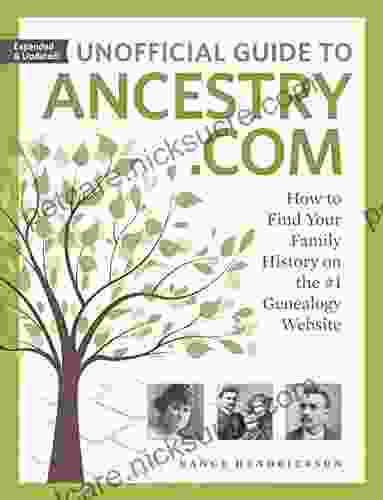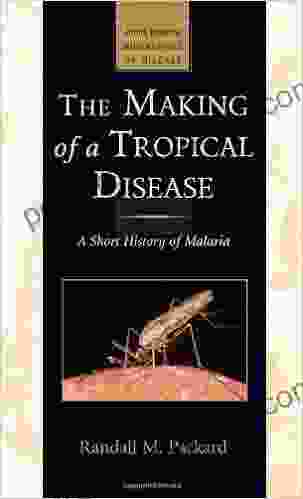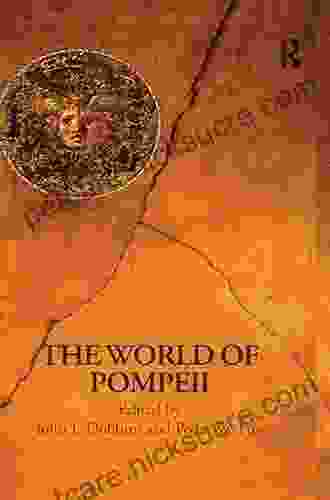The Calculus Genetic Approach: Harnessing Evolutionary Computation for Efficient Optimization

: The Realm of Optimization and Its Challenges
Optimization lies at the very heart of modern-day problem-solving, spanning diverse disciplines ranging from engineering and finance to data analysis and software design. Its essence lies in finding optimal solutions that maximize (or minimize) objective functions within specified constraints. However, the pursuit of optimal solutions can be a formidable endeavor, often encountering complex, nonlinear, or multi-modal search landscapes.
Traditional optimization methods, such as gradient descent or linear programming, often struggle to navigate these intricate optimization terrains. Their reliance on local search strategies can lead to entrapment in local optima, hindering the discovery of truly optimal solutions. Moreover, these methods may require significant computational resources and expert knowledge to fine-tune parameters, making them less accessible and efficient for a wider range of users.
4.4 out of 5
| Language | : | English |
| File size | : | 17257 KB |
| Text-to-Speech | : | Enabled |
| Screen Reader | : | Supported |
| Enhanced typesetting | : | Enabled |
| Print length | : | 192 pages |
| Lending | : | Enabled |
| X-Ray for textbooks | : | Enabled |
Introducing the Calculus Genetic Approach: Inspired by Nature's Evolutionary Wisdom
The Calculus Genetic Approach (CGA),a novel and groundbreaking evolutionary computation technique, emerges as a powerful alternative to traditional optimization methods. Inspired by the principles of natural evolution, CGA harnesses the power of population-based search and genetic operators to navigate complex search spaces and identify optimal solutions with remarkable efficiency.
Deciphering the Building Blocks of CGA: Mimicking Nature's Evolutionary Processes
At the core of CGA lies a population of potential solutions, much like a population of individuals within a biological ecosystem. Each solution, represented as a vector of decision variables, carries a fitness value that reflects its performance in optimizing the objective function.
The CGA simulates the process of natural evolution through a series of iterative steps:
- Selection: Fitter solutions have a higher probability of being selected, akin to individuals with advantageous traits having a greater likelihood of survival and reproduction.
- Crossover: Selected solutions undergo genetic recombination, exchanging genetic material to generate offspring with diverse traits.
- Mutation: Random perturbations are introduced into offspring to ensure genetic diversity and prevent premature convergence.
- Evaluation: Fitness values are calculated for the offspring, assessing their performance in optimizing the objective function.
This evolutionary cycle continues until a termination criterion is met, such as reaching a pre-determined number of generations or achieving a satisfactory level of optimization.
The Calculus Genetic Approach: A Versatile Tool for Diverse Optimization Challenges
CGA's strength lies in its broad applicability to a wide spectrum of optimization problems. It shines particularly in scenarios where:
- Search spaces are complex, nonlinear, or multi-modal.
- Objective functions are noisy or computationally expensive to evaluate.
- Gradient information is unavailable or unreliable.
- Multiple objectives need to be simultaneously optimized.
In these challenging optimization landscapes, CGA offers significant advantages over traditional methods:
- Global Search Capability: CGA's population-based approach allows it to explore the search space globally, reducing the risk of entrapment in local optima.
- Robustness to Noise: CGA is less sensitive to noise in the objective function or input data, making it suitable for real-world optimization scenarios.
- Flexibility and Customization: CGA's genetic operators and selection mechanisms can be customized to suit specific problem characteristics, enhancing its optimization performance.
Harnessing CGA's Power: A Comprehensive Implementation Guide
To harness the capabilities of CGA, a structured implementation process is essential:
1. Problem Formulation: Clearly define the objective function, decision variables, constraints, and termination criteria.
2. Population Initialization: Generate an initial population of potential solutions randomly or using problem-specific knowledge.
3. Fitness Evaluation: Calculate the fitness value of each solution using the objective function.
4. Selection: Employ selection mechanisms, such as tournament selection or roulette wheel selection, to choose fitter solutions for reproduction.
5. Crossover: Perform genetic recombination operations, such as single-point crossover or uniform crossover, to generate offspring.
6. Mutation: Introduce random perturbations into offspring with a specified mutation rate to maintain genetic diversity.
7. Evaluation and Termination: Evaluate the fitness of offspring and repeat steps 4-6 until the termination criterion is met.
8. Solution Analysis: Analyze the final population to identify the optimal solution(s) and evaluate the overall performance of the CGA.
Case Studies: CGA's Success in Diverse Optimization Domains
CGA has demonstrated its prowess in optimizing a wide range of real-world problems:
- Engineering Design: Optimizing aircraft wing profiles to enhance aerodynamic performance and fuel efficiency.
- Financial Modeling: Calibrating financial models to accurately predict market behavior and optimize investment strategies.
- Data Clustering: Identifying optimal clusters within large datasets to facilitate data analysis and visualization.
- Image Processing: Enhancing image quality through noise reduction and feature extraction.
These case studies exemplify CGA's versatility and its ability to deliver superior solutions in complex and challenging optimization scenarios.
: CGA - A Powerful Tool in the Optimization Frontier
The Calculus Genetic Approach stands as a formidable optimization technique, drawing inspiration from nature's evolutionary processes. Its ability to navigate complex search spaces, handle noisy data, and optimize multiple objectives simultaneously makes it an ideal choice for a plethora of optimization challenges.
As researchers and practitioners continue to explore the full potential of CGA, we can anticipate even more groundbreaking applications and advancements in the ever-evolving field of optimization.
4.4 out of 5
| Language | : | English |
| File size | : | 17257 KB |
| Text-to-Speech | : | Enabled |
| Screen Reader | : | Supported |
| Enhanced typesetting | : | Enabled |
| Print length | : | 192 pages |
| Lending | : | Enabled |
| X-Ray for textbooks | : | Enabled |
Do you want to contribute by writing guest posts on this blog?
Please contact us and send us a resume of previous articles that you have written.
 Fiction
Fiction Non Fiction
Non Fiction Romance
Romance Mystery
Mystery Thriller
Thriller SciFi
SciFi Fantasy
Fantasy Horror
Horror Biography
Biography Selfhelp
Selfhelp Business
Business History
History Classics
Classics Poetry
Poetry Childrens
Childrens Young Adult
Young Adult Educational
Educational Cooking
Cooking Travel
Travel Lifestyle
Lifestyle Spirituality
Spirituality Health
Health Fitness
Fitness Technology
Technology Science
Science Arts
Arts Crafts
Crafts DIY
DIY Gardening
Gardening Petcare
Petcare Ann Olga Koloski Ostrow
Ann Olga Koloski Ostrow Cathy Hester Seckman
Cathy Hester Seckman Jeremy Lent
Jeremy Lent Scott Matthews
Scott Matthews Jill Heinerth
Jill Heinerth Os Guinness
Os Guinness Jacob Stegenga
Jacob Stegenga Berkshire K Greene
Berkshire K Greene Jeanne Oliver
Jeanne Oliver Darril Fosty
Darril Fosty Holly Hook
Holly Hook Phyllis Franklin
Phyllis Franklin Jack Newfield
Jack Newfield Vikas Bhushan
Vikas Bhushan Kev Reynolds
Kev Reynolds Patricia G Lange
Patricia G Lange R I Chalmers
R I Chalmers David Wolff
David Wolff Hana Ali
Hana Ali Kristen Thrasher
Kristen Thrasher Alan Greenfield
Alan Greenfield William E Glassley
William E Glassley Asti Hustvedt
Asti Hustvedt Taylor Fontenot
Taylor Fontenot Editions La Plume D Eros
Editions La Plume D Eros 1st Ed 2020 Edition Kindle Edition
1st Ed 2020 Edition Kindle Edition Mara Rutherford
Mara Rutherford Jonathan Tarbox
Jonathan Tarbox Samantha Boardman
Samantha Boardman Nicole Libin Phd
Nicole Libin Phd Bruce Chatwin
Bruce Chatwin Mark Vee John
Mark Vee John Andy Kirkpatrick
Andy Kirkpatrick M Susan Lindee
M Susan Lindee Anton Angelov
Anton Angelov Diane H Tracey
Diane H Tracey Lei Wang
Lei Wang Dan Robson
Dan Robson Mike Chappell
Mike Chappell Tillie Cole
Tillie Cole Amita Jassi
Amita Jassi Bob Allcorn
Bob Allcorn Rafael Nadal
Rafael Nadal Pat Manley
Pat Manley Keith Bowden
Keith Bowden Michael Archer
Michael Archer Dk Publishing
Dk Publishing Timothy R Pauketat
Timothy R Pauketat Lindsey Bliss
Lindsey Bliss Robert Clifton Robinson
Robert Clifton Robinson Derek Rowntree
Derek Rowntree Paul Haddad
Paul Haddad Pam Jarvis
Pam Jarvis Wabun Wind
Wabun Wind Jamie Whyte
Jamie Whyte Clark A Campbell
Clark A Campbell Karen Kovacs
Karen Kovacs Mark Santino
Mark Santino Ali Psiuk
Ali Psiuk Terry Pratchett
Terry Pratchett Lech A Grzelak
Lech A Grzelak Ronald York
Ronald York Desiree Trattles
Desiree Trattles Knowledge Tree
Knowledge Tree Intelligent
Intelligent Joshua James
Joshua James Linda L French
Linda L French David Faulkner
David Faulkner Stephen R Lawhead
Stephen R Lawhead Karen L Cox
Karen L Cox Lynne Tolley
Lynne Tolley Caroline Fidanza
Caroline Fidanza Monte Burch
Monte Burch Robyn Hawkins
Robyn Hawkins Adam Rutherford Phd
Adam Rutherford Phd Chad Waterbury
Chad Waterbury Matthew Harffy
Matthew Harffy Fletcher Dunn
Fletcher Dunn Peter Lightbown
Peter Lightbown Richard Hofstadter
Richard Hofstadter Janet Godwin
Janet Godwin Gary M Schultheis
Gary M Schultheis Daniel Todd Gilbert
Daniel Todd Gilbert Patricia B Mcconnell
Patricia B Mcconnell Geoff Powter
Geoff Powter Karina Manta
Karina Manta Keshia A Case
Keshia A Case John Vigor
John Vigor Natalia Molina
Natalia Molina Barry Ord Clarke
Barry Ord Clarke Alison Gopnik
Alison Gopnik Carola Hein
Carola Hein Larry A Yff
Larry A Yff Jean Yves Leloup
Jean Yves Leloup Sanjay Sarma
Sanjay Sarma Megan Sloan
Megan Sloan Kajal Gupta
Kajal Gupta Louise Warneford
Louise Warneford Joseph Mercola
Joseph Mercola Saroo Brierley
Saroo Brierley Clifford E Trafzer
Clifford E Trafzer Jandy Nelson
Jandy Nelson Derald Wing Sue
Derald Wing Sue Rosemary Ellen Guiley
Rosemary Ellen Guiley Elizabeth Field
Elizabeth Field Michael Ross
Michael Ross Lani Forbes
Lani Forbes Elise Hennessy
Elise Hennessy Elaine Heney
Elaine Heney Natsuki Takaya
Natsuki Takaya Irene Spencer
Irene Spencer Michael Clarke
Michael Clarke Skylar Kergil
Skylar Kergil Geoff Johns
Geoff Johns Paul Freedman
Paul Freedman Felicity Cloake
Felicity Cloake Sara Snow
Sara Snow Guillermo Gonzalez
Guillermo Gonzalez Paul Johnson
Paul Johnson Aron Ralston
Aron Ralston Lawrence T Friedhoff
Lawrence T Friedhoff Anthony Burgess
Anthony Burgess Alexandra Kenin
Alexandra Kenin Arny Alberts
Arny Alberts George Mount
George Mount 1st Edition Kindle Edition
1st Edition Kindle Edition Timothy Dickeson
Timothy Dickeson House Of Talent
House Of Talent Joan Ryan
Joan Ryan Forrest Willett
Forrest Willett Anne Polli
Anne Polli Belinia Xenrale
Belinia Xenrale Janet Malcolm
Janet Malcolm Anthony Haynes
Anthony Haynes Webb Chiles
Webb Chiles Hesam Nemounehkhah
Hesam Nemounehkhah Rebekah Dodson
Rebekah Dodson Robert Oerter
Robert Oerter David Roberts
David Roberts Gail Buckland
Gail Buckland James Adams
James Adams Jacob Gardner
Jacob Gardner Katie Singer
Katie Singer Francis L Macrina
Francis L Macrina Mambo Chita Tann
Mambo Chita Tann Bill Douglas
Bill Douglas Rebecca Solnit
Rebecca Solnit Gerd Gigerenzer
Gerd Gigerenzer Glenda Green
Glenda Green H Lee Jones
H Lee Jones Lori Bregman
Lori Bregman Burt L Standish
Burt L Standish Raven Morgaine
Raven Morgaine John S Farnam
John S Farnam Emily Vikre
Emily Vikre Daniel Scott
Daniel Scott Janice K Ledford
Janice K Ledford Dylan Dethier
Dylan Dethier Day Schildkret
Day Schildkret Christa Mackinnon
Christa Mackinnon Sarah A Reinhard
Sarah A Reinhard 15th Edition Kindle Edition
15th Edition Kindle Edition David Clark
David Clark Bilingual Edition Kindle Edition
Bilingual Edition Kindle Edition Geraint Thomas
Geraint Thomas Tadahiko Mizuno
Tadahiko Mizuno Stanley Vast
Stanley Vast Pam Vredevelt
Pam Vredevelt John Toussaint
John Toussaint Jay Cassell
Jay Cassell Pete Magill
Pete Magill Jody Morse
Jody Morse Tyler Lansford
Tyler Lansford Lou Nanne
Lou Nanne Andrea Sfiligoi
Andrea Sfiligoi Will Nett
Will Nett Helen Garabedian
Helen Garabedian Erin Miller
Erin Miller 1st Ed 2016 Edition Kindle Edition
1st Ed 2016 Edition Kindle Edition Mae Ilami Onyekwum
Mae Ilami Onyekwum Paul Annacone
Paul Annacone Karl Rehn
Karl Rehn Robert Irwin
Robert Irwin Harry Fisch
Harry Fisch Peter Burns
Peter Burns Tom Chivers
Tom Chivers Stacey Steinberg
Stacey Steinberg Yaron Seidman
Yaron Seidman Amanda Kingloff
Amanda Kingloff Livy
Livy Sara Saedi
Sara Saedi Michael Borenstein
Michael Borenstein Harold Simmons
Harold Simmons Rick Barba
Rick Barba Ewan Mcgregor
Ewan Mcgregor Nageshwar Sah
Nageshwar Sah Tamonya Sands
Tamonya Sands Marisa Kanter
Marisa Kanter Sarah Thompson
Sarah Thompson Robyn Perry Worthington
Robyn Perry Worthington Tim Deroche
Tim Deroche Mark Seidenberg
Mark Seidenberg Hannu Rajaniemi
Hannu Rajaniemi Tim Hollister
Tim Hollister Dana Trentini
Dana Trentini Bob Chandler
Bob Chandler Shane Benzie
Shane Benzie Matthew Dworak
Matthew Dworak John Small
John Small Amanda Claridge
Amanda Claridge Mary Douglas
Mary Douglas Gary Dierking
Gary Dierking Botros Rizk
Botros Rizk Christine E Sleeter
Christine E Sleeter Kiley Reid
Kiley Reid Cal Peternell
Cal Peternell Elizabeth Becker
Elizabeth Becker Kathleen Buckstaff
Kathleen Buckstaff Spire Study System
Spire Study System Ellie Marney
Ellie Marney Julie Angus
Julie Angus Kim Mack Rosenberg
Kim Mack Rosenberg Lisa Marasco
Lisa Marasco Alex Hibbert
Alex Hibbert Ben Rothenberg
Ben Rothenberg Lh Press
Lh Press Duncan Hamilton
Duncan Hamilton David Barrett
David Barrett Dr Mike Grevlos
Dr Mike Grevlos Cathy Raubenheimer
Cathy Raubenheimer Charlotte Eliopoulos
Charlotte Eliopoulos Nancy Hendrickson
Nancy Hendrickson Hafsah Faizal
Hafsah Faizal Carmen Acevedo Butcher
Carmen Acevedo Butcher Diana Papaioannou
Diana Papaioannou Eryk Lewinson
Eryk Lewinson Sophie Kinsella
Sophie Kinsella Craig Clapper
Craig Clapper Rachel Reed
Rachel Reed Ben Coates
Ben Coates Mark Miller
Mark Miller Broccoli Lion
Broccoli Lion Liz Thomas
Liz Thomas Leslie Anthony
Leslie Anthony Chris J Ellis
Chris J Ellis Disha Experts
Disha Experts Rachael Bell Irving
Rachael Bell Irving Manjit Kumar
Manjit Kumar Edward A Bell
Edward A Bell Rana Conway
Rana Conway Stephen C Meyer
Stephen C Meyer Alexandre Paiva
Alexandre Paiva Kay Kennedy
Kay Kennedy Xiufeng Liu
Xiufeng Liu Bruce Brown
Bruce Brown Robert Lanza
Robert Lanza Larry Kaniut
Larry Kaniut Joanne Calderwood
Joanne Calderwood Taran Matharu
Taran Matharu Bud Hasert
Bud Hasert Gerald Beaudry
Gerald Beaudry Ashlee Kasten
Ashlee Kasten Julie K Briggs
Julie K Briggs Monica Beyer
Monica Beyer Nick Redfern
Nick Redfern Arden Rose
Arden Rose Alice Waters
Alice Waters Julia Rutland
Julia Rutland Launi Meili
Launi Meili Ric Conrad
Ric Conrad Rollo Tomassi
Rollo Tomassi Sean Fitz Gerald
Sean Fitz Gerald Jeffrey S Saltz
Jeffrey S Saltz Samuel Owedyk
Samuel Owedyk Randall M Packard
Randall M Packard John L Havlin
John L Havlin Andrew Solomon
Andrew Solomon Kara Goucher
Kara Goucher Norman Delgado
Norman Delgado Alice Roberts
Alice Roberts Evy Poumpouras
Evy Poumpouras James Proctor
James Proctor Ian Sample
Ian Sample Susan Ludington Hoe
Susan Ludington Hoe Sally A Lipsky
Sally A Lipsky Graham Priest
Graham Priest T M Mikita
T M Mikita Helen Batten
Helen Batten Eric Sevareid
Eric Sevareid Otto Toeplitz
Otto Toeplitz Marva Collins
Marva Collins Piotr Naskrecki
Piotr Naskrecki 1st Ed 2017 Edition Kindle Edition
1st Ed 2017 Edition Kindle Edition Laura Luther
Laura Luther Ivor Horton
Ivor Horton Jeremy Bhandari
Jeremy Bhandari Gill Stewart
Gill Stewart Peter Hessler
Peter Hessler Michael Schiavone
Michael Schiavone Kyler Shumway
Kyler Shumway Christopher Hook
Christopher Hook Larry Krieger
Larry Krieger R J Vickers
R J Vickers Steve Crawford
Steve Crawford Erfun Geula
Erfun Geula Denis Dwyer
Denis Dwyer Elizabeth Heavey
Elizabeth Heavey Gary E Schwartz
Gary E Schwartz My Daily German
My Daily German Travis Senzaki
Travis Senzaki Nathan D Lang Raad
Nathan D Lang Raad Steve Garratt
Steve Garratt Orji Onyebuchi
Orji Onyebuchi Jamie Dorobek
Jamie Dorobek Bradmd
Bradmd Mindfulness Hypnosis Academy
Mindfulness Hypnosis Academy Chip Ingram
Chip Ingram Ashley Stanford
Ashley Stanford David Fine
David Fine Leona S Aiken
Leona S Aiken Lisa R Cohen
Lisa R Cohen Jay Carter
Jay Carter John T Cacioppo
John T Cacioppo Kathy Farrokhzad
Kathy Farrokhzad Susan Alcorn
Susan Alcorn Richard E Nisbett
Richard E Nisbett Philip Coppens
Philip Coppens Alan Naldrett
Alan Naldrett Joachim Rossberg
Joachim Rossberg Morten H Christiansen
Morten H Christiansen Guy Harrison
Guy Harrison Sharon Copeland
Sharon Copeland Mildred Council
Mildred Council Ann Jackson
Ann Jackson Michelle Damiani
Michelle Damiani Adam Cesare
Adam Cesare Jon Young
Jon Young Daisaku Ikeda
Daisaku Ikeda Jesse M Ehrenfeld
Jesse M Ehrenfeld Michael T Mcdermott
Michael T Mcdermott Jason Sumner
Jason Sumner Judith Warner
Judith Warner Alexandra Witze
Alexandra Witze Dierdre Wolownick Honnold
Dierdre Wolownick Honnold 1st Ed 2019 Edition Kindle Edition
1st Ed 2019 Edition Kindle Edition Mike Barrett
Mike Barrett Alison Pray
Alison Pray Dorthe Berntsen
Dorthe Berntsen Adeline Yen Mah
Adeline Yen Mah Paul A Laviolette
Paul A Laviolette Florence Nightingale
Florence Nightingale Suzy Hopkins
Suzy Hopkins Didier Reiss
Didier Reiss Sarah Lawton
Sarah Lawton Amanda Brooks
Amanda Brooks The Lodge Company
The Lodge Company Nicole Zasowski
Nicole Zasowski Jacqueline Carey
Jacqueline Carey Raichelle Carter
Raichelle Carter Loudell F Snow
Loudell F Snow Heather A Smith
Heather A Smith James Ragonnet
James Ragonnet Nicholas J Saunders
Nicholas J Saunders Maureen Dempsey
Maureen Dempsey Christian Straube
Christian Straube Egerton Ryerson Young
Egerton Ryerson Young Nancy B Rapoport
Nancy B Rapoport Michele Smith
Michele Smith Wendy Sullivan
Wendy Sullivan Jane Yeadon
Jane Yeadon Beryl Beare
Beryl Beare Harvey Penick
Harvey Penick Isa Herrera
Isa Herrera Jerome Rand
Jerome Rand Irina Szmelskyj
Irina Szmelskyj Brad Myers
Brad Myers Felicia Pizzonia
Felicia Pizzonia Alan Agresti
Alan Agresti Wolfgang Jank
Wolfgang Jank Sarah A Clark
Sarah A Clark Michael R Canfield
Michael R Canfield Kaoru Sinozaki
Kaoru Sinozaki Lenora Chu
Lenora Chu Laura Prepon
Laura Prepon Mayim Bialik
Mayim Bialik R K Agarwal
R K Agarwal J F Tamayo
J F Tamayo Valerie Nash Chang
Valerie Nash Chang Jonathan Vaughters
Jonathan Vaughters Ukay J Ekong
Ukay J Ekong Chris Parsons
Chris Parsons 1st Ed 2021 Edition Kindle Edition
1st Ed 2021 Edition Kindle Edition Doug Degrood
Doug Degrood Maia Motley
Maia Motley Andrea Olson
Andrea Olson S Elia
S Elia Andrew Evans
Andrew Evans Zachary Willey
Zachary Willey Mike Bender
Mike Bender Shane Jones
Shane Jones Robin Hobb
Robin Hobb Vaclav Smil
Vaclav Smil Seth Tucker
Seth Tucker Nick Morrison
Nick Morrison Ray Mcnulty
Ray Mcnulty Traci Chee
Traci Chee Aaron T Beck
Aaron T Beck 1st Ed 2018 Edition Kindle Edition
1st Ed 2018 Edition Kindle Edition Bryn Huntpalmer
Bryn Huntpalmer Philippa Langley
Philippa Langley Franz Boas
Franz Boas Diane Vaughan
Diane Vaughan Jacqueline Corricelli
Jacqueline Corricelli Bill Rodgers
Bill Rodgers Ruth Ware
Ruth Ware Teddy Atlas
Teddy Atlas Ivana Bajic Hajdukovic
Ivana Bajic Hajdukovic 6th Edition Kindle Edition
6th Edition Kindle Edition Charles Fleming
Charles Fleming Jamil Zaki
Jamil Zaki Jean Pierre De Caussade
Jean Pierre De Caussade David I Spivak
David I Spivak Deborah T Goldberg
Deborah T Goldberg Phil Mickelson
Phil Mickelson Daniel H Pink
Daniel H Pink Sandra Uwiringiyimana
Sandra Uwiringiyimana Janice Hudson
Janice Hudson Deborah Spungen
Deborah Spungen D James Benton
D James Benton Evelyn Raab
Evelyn Raab Jim Baggott
Jim Baggott Jareth Tempest
Jareth Tempest Frank Wilczek
Frank Wilczek Stephen Bodio
Stephen Bodio S K Gupta
S K Gupta Edward Marston
Edward Marston Mike Lanza
Mike Lanza Jo Bartlett
Jo Bartlett Karyn Garvin
Karyn Garvin Ejike Ifeanyichukwu
Ejike Ifeanyichukwu Joyce L Vedral
Joyce L Vedral Chris Stringer
Chris Stringer Latham Thomas
Latham Thomas Joshua G Shifrin
Joshua G Shifrin Thomas Lickona
Thomas Lickona Leonard Sax
Leonard Sax Robert Lomas
Robert Lomas James M Tabor
James M Tabor Robert Chu
Robert Chu Philip Moore
Philip Moore Grace Liu
Grace Liu Matthew B Crawford
Matthew B Crawford Neil Sagebiel
Neil Sagebiel Naomi Moriyama
Naomi Moriyama David Kahn
David Kahn David Weber
David Weber Roger Frampton
Roger Frampton Mark Lattanzi
Mark Lattanzi Brian Meier
Brian Meier George Grimm
George Grimm Lars Anderson
Lars Anderson Robert Milner
Robert Milner Raymond Arsenault
Raymond Arsenault Jeff Benedict
Jeff Benedict Joshua Darwin
Joshua Darwin Carol Lynn Mckibben
Carol Lynn Mckibben Modestus Anabaraonye
Modestus Anabaraonye Estelle Maskame
Estelle Maskame Kim Dwinell
Kim Dwinell Peter Heller
Peter Heller Teri Tom
Teri Tom Carol Matsuzaki
Carol Matsuzaki Daniel L Schacter
Daniel L Schacter Brent Warner
Brent Warner Russ Moorhouse
Russ Moorhouse Ian Stewart
Ian Stewart Brent E Turvey
Brent E Turvey Shalini Shankar
Shalini Shankar Claire Dunn
Claire Dunn Tim Powers
Tim Powers Leonie Mack
Leonie Mack Christian Fader
Christian Fader Brian Fagan
Brian Fagan Perre Coleman Magness
Perre Coleman Magness Lavinia Collins
Lavinia Collins Six Sisters Stuff
Six Sisters Stuff Wendy Higgins
Wendy Higgins M L Buchman
M L Buchman Emily Chetkowski
Emily Chetkowski Richard Pears
Richard Pears Christopher Carter
Christopher Carter Paul Gaskell
Paul Gaskell Dinah Bucholz
Dinah Bucholz Robyn Ryle
Robyn Ryle Jacob Cohen
Jacob Cohen Fern Nichols
Fern Nichols Ron Larson
Ron Larson Sharon Wilkins
Sharon Wilkins
Light bulbAdvertise smarter! Our strategic ad space ensures maximum exposure. Reserve your spot today!
 Spencer PowellFollow ·10.3k
Spencer PowellFollow ·10.3k Leo MitchellFollow ·12.4k
Leo MitchellFollow ·12.4k Theodore MitchellFollow ·2.7k
Theodore MitchellFollow ·2.7k Camden MitchellFollow ·9.8k
Camden MitchellFollow ·9.8k Craig BlairFollow ·14.1k
Craig BlairFollow ·14.1k VoltaireFollow ·12.8k
VoltaireFollow ·12.8k Ian PowellFollow ·18.3k
Ian PowellFollow ·18.3k Maurice ParkerFollow ·16.9k
Maurice ParkerFollow ·16.9k

 Marcus Bell
Marcus BellThe Essential Guide to Angler Quick Reference: Your...
Embark on an unforgettable...

 Juan Butler
Juan ButlerThe Lupatus Stone: A Wicked Conjuring
The Lupatus Stone is a...

 Alvin Bell
Alvin BellUnveiling the Enchanting Memoirs of Lady Hyegyong: A...
In the annals of Korean...

 DeShawn Powell
DeShawn PowellAMC's Best Day Hikes in the Berkshires: Explore Majestic...
The Berkshires, a...

 Clark Campbell
Clark CampbellRewilding The Urban Soul: Reconnecting with Nature in the...
In the heart of sprawling metropolises, where...

 Cruz Simmons
Cruz SimmonsHow to Find Your Family History on a Genealogy Website: A...
Delving into the...
4.4 out of 5
| Language | : | English |
| File size | : | 17257 KB |
| Text-to-Speech | : | Enabled |
| Screen Reader | : | Supported |
| Enhanced typesetting | : | Enabled |
| Print length | : | 192 pages |
| Lending | : | Enabled |
| X-Ray for textbooks | : | Enabled |












